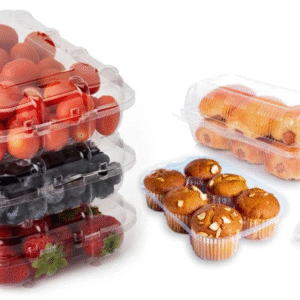As electric vehicles (EVs) grow in complexity—featuring advanced software modules for battery management, drive control, telematics, and autonomous systems—the need for robust, scalable testing methodologies has never been more urgent. Traditional bench testing and road trials alone are not sufficient. Enter HIL (Hardware-in-the-Loop) testing, a simulation-driven validation approach that has become indispensable for any serious Electrical Vehicle Software Development Company.
What is HIL Testing?
Hardware-in-the-Loop (HIL) is a technique that simulates physical systems (like an EV drivetrain, battery, or road environment) using real-time computational models while interfacing with the actual electronic control units (ECUs) and embedded software.
- Real hardware: Includes ECUs, sensors, and actuators used in production.
- Virtual environment: Mathematical models of the vehicle, road, and system dynamics.
- HIL platform: Manages simulation timing, I/O communication, fault injection, and data capture.
This setup allows developers to validate how software behaves under controlled, repeatable, and safe scenarios before real-world deployment.
The Importance of HIL Testing in EV Development
For Electrical Vehicle Software Development Companies, ensuring functional safety and system reliability is mission-critical. HIL testing provides:
- Early-stage validation: Simulate full vehicle behavior before the actual vehicle exists.
- Safe fault injection: Test edge cases like thermal runaway, regenerative braking failure, or sensor corruption.
- Scalable test automation: Execute regression tests across software versions automatically.
- Reduced risk: Identify bugs before on-road trials, reducing safety hazards and development cost.
How HIL Integrates with the EV Software Development Lifecycle
Hardware-in-the-Loop (HIL) testing plays a crucial role in the V-Model of automotive software engineering. This model emphasizes a structured development process where testing is planned parallel to development stages. HIL sits at the validation peak of this model, bridging the gap between software simulation and physical testing.
Phases Leading to HIL:
- Model-in-the-Loop (MiL): Initial phase where control algorithms are developed and validated using high-level models (e.g., Simulink). This validates software logic and control strategies.
- Software-in-the-Loop (SiL): The software is compiled and tested in a simulated environment without the need for actual hardware. It helps verify integration and control logic using real code.
- Hardware-in-the-Loop (HIL): At this advanced stage, the compiled embedded software is deployed on actual ECUs or control hardware (e.g., Vehicle Control Units), and connected to a real-time simulation of the EV system (plant model). This allows comprehensive validation under near-real-world conditions before deploying to a physical vehicle.
Key Phases Involving HIL Testing:
- ECU Firmware Validation: Confirm that control logic behaves correctly in response to real-time inputs under various simulated conditions.
- Communication Protocol Testing: Verify CAN, LIN, and FlexRay interfaces between multiple ECUs, and assess system behavior during message loss or corruption.
- Safety Standards Verification: Ensure compliance with functional safety requirements like ISO 26262, including safe state transitions and fault mitigation strategies.
- BMS and Inverter Controller Tuning: Fine-tune parameters for battery charging/discharging and motor control using real-time scenarios like thermal stress, state-of-charge variation, or regenerative braking.
Use Cases of HIL in Electrical Vehicle Software Development
Hardware-in-the-Loop (HIL) testing enables comprehensive, real-time validation of complex subsystems in electric vehicles. Below are some critical use cases where HIL plays a vital role:
1. Battery Management System (BMS) Validation
- Simulating varying State of Charge (SoC) and State of Health (SoH): HIL platforms recreate different battery charge levels and aging conditions to evaluate how the BMS monitors and manages battery health.
- Injecting cell imbalance or thermal runaway scenarios: Critical fault conditions, such as uneven cell voltages or overheating, are simulated safely to test the BMS’s fault detection and mitigation strategies.
- Validating charge/discharge limits: Ensures the BMS correctly enforces safe operating boundaries to prevent overcharging or deep discharge that could damage battery cells
2. Autonomous and ADAS Features
- Simulating real-time sensor inputs: HIL systems provide virtual data streams from sensors like LiDAR, radar, and cameras to ECUs responsible for advanced driver-assistance systems (ADAS).
- Validating decision-making algorithms: Enables testing of automated braking, lane keeping, and parking assistance logic under various simulated traffic and environmental conditions.
- Testing edge-case scenarios: Assesses system performance during challenging conditions such as poor visibility due to fog or rain, ensuring robust object detection and response.
3. Powertrain and Motor Control Testing
- Simulating road gradients and torque demands: Realistic driving conditions are modeled to evaluate how motor controllers respond to uphill/downhill slopes and varying torque requirements.
- Evaluating acceleration/deceleration patterns: Tests vehicle dynamic responses under different payloads and driving styles to ensure smooth and efficient control.
- Tuning Field-Oriented Control (FOC) logic: Fine-tunes motor control algorithms for optimal efficiency and performance, minimizing energy loss and enhancing drivability.
4. Communication Network Testing
- Injecting CAN/LIN bus failures: Simulates faults like message loss or corrupted signals on vehicle communication networks to test software resilience.
- Validating message timing and priority: Ensures critical control messages are transmitted with minimal delay and correct prioritization, avoiding communication bottlenecks.
- Testing software robustness under network load and DoS attacks: Assesses system stability and security against potential denial-of-service or cyberattack scenarios targeting vehicle networks.
5. Charging Infrastructure Compatibility
- Simulating various AC/DC chargers: Emulates standards such as CCS, CHAdeMO, and GB/T to verify compatibility with diverse charging stations worldwide.
- Validating onboard charger performance: Tests behavior under grid fluctuations or unstable voltage conditions to ensure safe and efficient charging.
- Testing Vehicle-to-Grid (V2G) protocols: Verifies bidirectional communication and power flow capabilities between EVs and the electrical grid, supporting energy storage and grid balancing functions.
Advantages of HIL Over Traditional Testing
| Criteria | Traditional Testing | HIL Testing |
| Cost | High (prototype builds, vehicle wear) | Low (simulation-based) |
| Repeatability | Low | High |
| Fault Injection | Risky | Safe and controlled |
| Coverage | Limited to real-world scenarios | Covers edge and unsafe conditions |
| Time to Market | Slower | Faster development cycles |
Challenges and Considerations
Despite its advantages, HIL comes with technical and strategic complexities:
- High initial setup cost for simulation infrastructure and real-time processors
- Model accuracy is crucial—poor models lead to misleading test results
- Synchronization issues between simulated and real hardware
- Domain-specific tuning—each system (BMS, inverter, ADAS) needs tailored configurations
That’s why working with an experienced Electrical Vehicle Software Development Company is essential. They bring domain knowledge, pre-built plant models, and proven test strategies.
Role of an Electrical Vehicle Software Development Company in HIL Testing
A seasoned Electrical Vehicle Software Development Company plays a pivotal role in integrating Hardware-in-the-Loop (HIL) testing into the EV software development lifecycle. Their expertise ensures that EV software systems are robust, compliant, and production-ready.
Turnkey HIL Solutions:
- Real-time plant models for EV dynamics: Develop accurate simulations of the electric vehicle’s physical components, including battery behavior, powertrain, and thermal systems, to enable realistic HIL testing.
- Custom test benches for ECUs: Design and implement tailored hardware setups that connect embedded controllers to simulated environments, replicating real-world EV operations.
- Integration of HIL with DevOps CI/CD pipelines: Embed automated HIL testing into continuous integration and continuous deployment workflows, accelerating validation cycles and improving software quality.
Compliance-Driven Development:
- ISO 26262 (Functional Safety): Ensure that HIL testing procedures and software adhere to automotive safety standards, minimizing risks in EV operation.
- ASPICE (Automotive SPICE): Follow industry best practices for software process improvement, guaranteeing high-quality development and testing.
- AUTOSAR standards compatibility: Develop software and testing frameworks compatible with AUTOSAR architectures to promote interoperability and scalability.
Toolchain Expertise:
- dSPACE, NI VeriStand, Vector CANoe, Speedgoat: Utilize industry-leading HIL platforms and simulation tools to create reliable, real-time test environments.
- MATLAB/Simulink for model development: Leverage advanced modeling and simulation tools for developing control algorithms and plant models essential for HIL setups.
- ETAS INCA for calibration and measurement: Apply specialized tools for precise calibration, data acquisition, and measurement during HIL testing.
Conclusion
In today’s competitive EV landscape, HIL testing is no longer optional—it’s foundational. From validating BMS algorithms to testing autonomous driving logic under simulated edge conditions, HIL enables Electrical Vehicle Software Development Companies to deliver superior, safety-certified software at scale and speed.
As EVs become increasingly software-defined, integrating HIL into your development and testing pipeline is a strategic move that ensures quality, safety, and compliance—without compromising time to market.
FAQs
1. What types of EV systems benefit most from HIL testing?
Battery management systems, motor/inverter control, autonomous driving modules, telematics, and onboard chargers all benefit greatly from HIL validation.
2. Is HIL testing only for OEMs?
No. Tier-1 suppliers, startups, and any Electrical Vehicle Software Development Company involved in ECU development or vehicle-level software should leverage HIL.
3. How long does it take to set up a HIL test environment?
Depending on system complexity, it may take 3–6 weeks for basic HIL setups and up to 3–6 months for full-scale platforms including sensor simulations and multi-ECU testing.





